Visiting the Hue Imperial city in Vietnam
In this post, we explore one of the most important ancient Hue imperial city in Vietnam. Located in central Vietnam along the Perfume River and truly one of the most impressive historic sites to visit in Vietnam. It is also certified as Unesco World Heritage site as the royal, spiritual and cultural capital of ancient Vietnam established in 1802.
In this post we share the main historic Unesco sites, a cruise along the Perfume River, local markets, royal gardens and tombs and other must visit sites in this impressive city and the Citadel or historic royal palaces and temples of Hue to explore below.
We loved visiting this ancient city and enjoyed the easy access to all the main attractions either by a self-tour and combination with day trips that made the entire region accessible and complete.
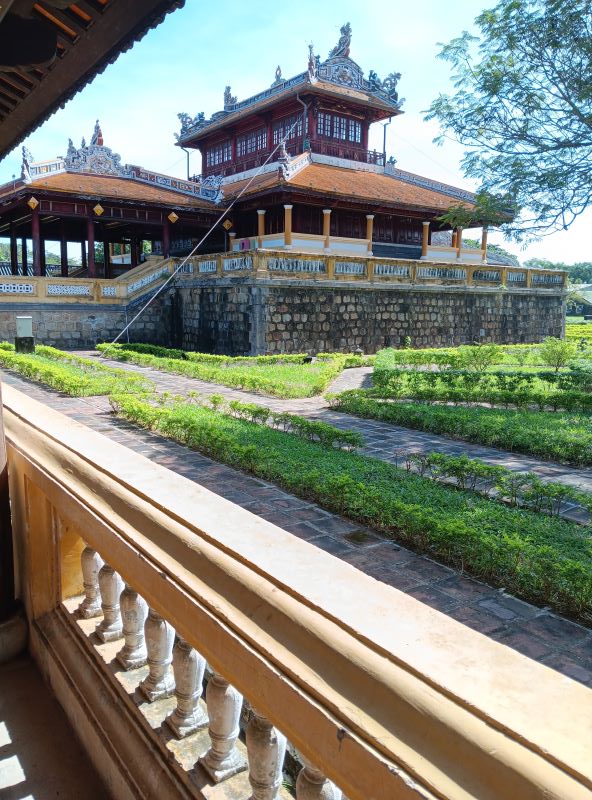
Explore Imperial Hue: Ancient tombs and temples, the Imperial Forbidden city, Hue city & attractions
Hue was recognized as a UNESCO World Heritage Site in 1993 for its cultural and historical importance. The designation highlights the Imperial City and the broader Complex of Monuments in Hue, which include royal palaces, temples, pagodas, tombs, and administrative buildings from the Nguyen Dynasty. This was Vietnam’s last imperial dynasty, and Hue served as its capital from 1802 to 1945. Despite damage from wars, floods, and natural decay, many structures still stand as remarkable examples of Vietnamese court architecture influenced by Confucian and Buddhist principles. UNESCO’s certification not only acknowledges Hue’s outstanding universal value but also supports ongoing conservation and restoration projects to preserve it as a living monument to Vietnam’s imperial past.

A brief history of Hue
The Imperial City of Hue, located in central Vietnam, was established in the early 19th century when Emperor Gia Long, the founder of the Nguyen Dynasty, chose Hue as the capital in 1802. Modeled after Beijing’s Forbidden City, it was built as a walled fortress and palace complex, serving as the political, cultural, and religious center of the dynasty for over a century. The city housed emperors, their families, mandarins, and important state institutions. During the French colonial period, Hue lost much of its political influence, and after the fall of the Nguyen Dynasty in 1945, it ceased to be a royal seat. The Imperial City suffered heavy damage during wars, particularly the Battle of Hue in 1968, but restoration efforts have since been ongoing. Today, it is recognized as a UNESCO World Heritage Site, preserving its role as a symbol of Vietnam’s imperial past.
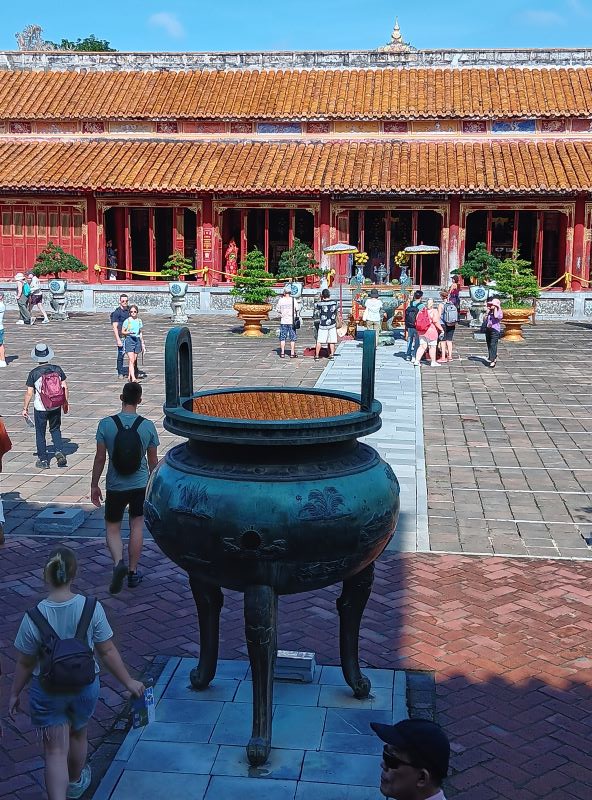
Where is Hue located?
Hue is located in central Vietnam, along the banks of the Perfume River (Sông Hương). It lies about 700 kilometers south of Hanoi and 1,100 kilometers north of Ho Chi Minh City, making it a natural stop between the country’s two major cities. Nestled near the coast of the East Sea and surrounded by mountains on its western side, Hue enjoys a strategic position that historically made it an ideal imperial capital. Today, its central location makes it easily accessible for travelers exploring both northern and southern Vietnam.
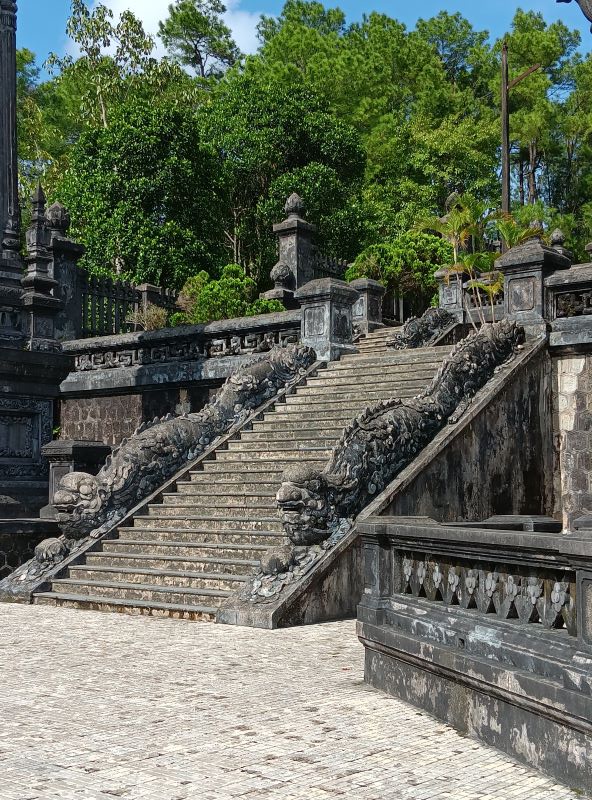
How to get to Hue in Central Vietnam
Here’s an outline on how to get to Hue in Central Vietnam:
1. By Air
- Phu Bai International Airport (about 15 km from Hue city center).
- Direct domestic flights from Hanoi, Ho Chi Minh City, and Da Nang.
- Some limited international connections, mainly from nearby Asian hubs.
- Taxis, shuttle buses, or private transfers are available from the airport into the city.
2. By Train
- Hue Railway Station connects to Vietnam’s Reunification Express line.
- Overnight trains from Hanoi and Ho Chi Minh City are popular options.
- Scenic daytime trains run from Da Nang, offering views of Hai Van Pass and the coastline.
3. By Bus
- Long-distance sleeper buses connect Hue with Hanoi, Da Nang, Hoi An, and Ho Chi Minh City.
- Budget-friendly but less comfortable on long routes.
- Several private bus companies offer direct tourist services.
4. By Car or Motorbike
- Hue is accessible by car or motorbike from Da Nang and Hoi An (via the Hai Van Pass or Hai Van Tunnel).
- Driving offers flexibility and opportunities to stop at beaches, lagoons, and viewpoints along the way.
5. By Guided Tour Transfers
- Many tour operators in Da Nang or Hoi An provide private cars, vans, or group transfers to Hue.
- Often combined with sightseeing stops such as the Hai Van Pass, Lang Co Beach, or Marble Mountains.
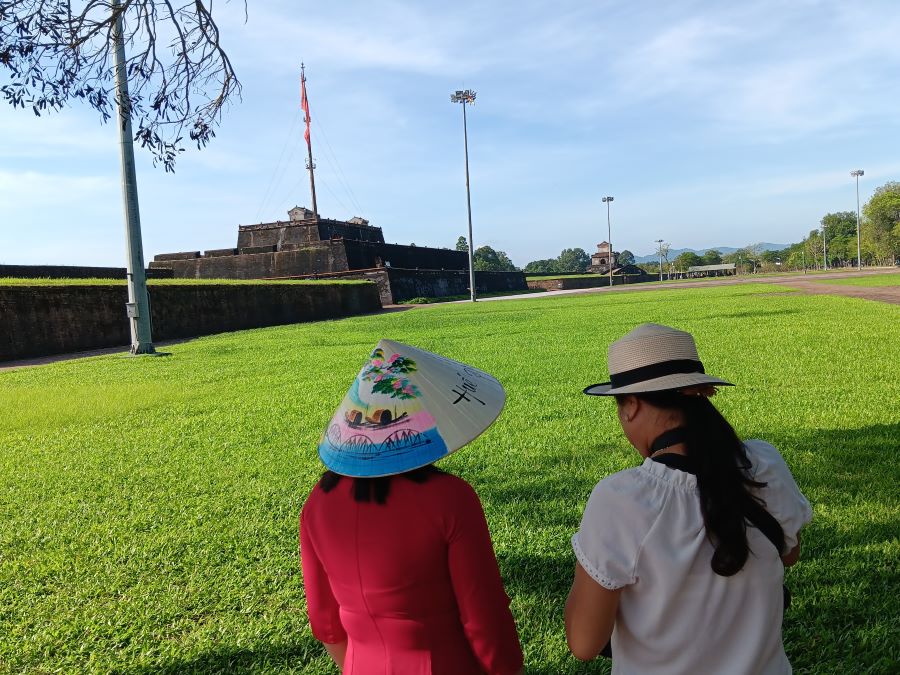
Top attractions to visit in Hue
Here’s an outline of the top attractions to visit in Hue, Vietnam from the historic citadel area, the beautiful Perfume river, markets, gardens and tombs and many other important treasures below:
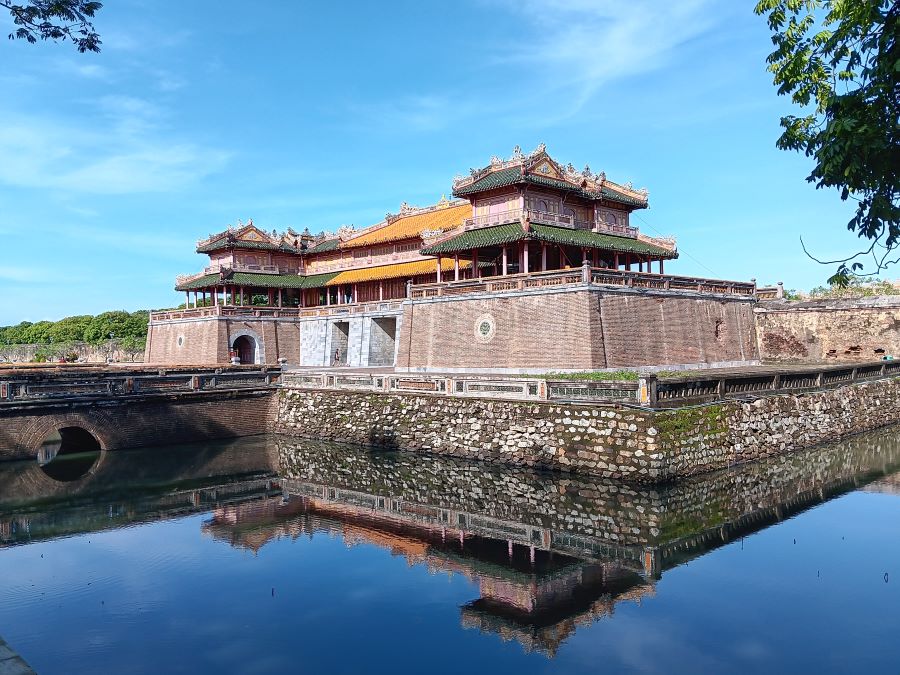
1. Imperial City (Citadel)
The Imperial City of Hue, often called the Citadel, is a UNESCO World Heritage site and the former political, cultural, and religious center of the Nguyen Dynasty, which ruled Vietnam from 1802 to 1945. Enclosed within massive stone walls and surrounded by a wide moat, the complex was designed to mirror the Forbidden City of Beijing, with a grand layout of palaces, temples, administrative buildings, and gardens. At its heart lies the Purple Forbidden City, once reserved for the emperor and his family, though much of it was heavily damaged during wars. Despite this, the Citadel remains an extraordinary place to explore, offering insight into royal traditions, Vietnamese architecture, and centuries of imperial history.
- Walled fortress and palace complex of the Nguyen Dynasty.
- Includes the Forbidden Purple City, royal residences, and ceremonial halls.
- Central highlight of Hue’s World Heritage status.
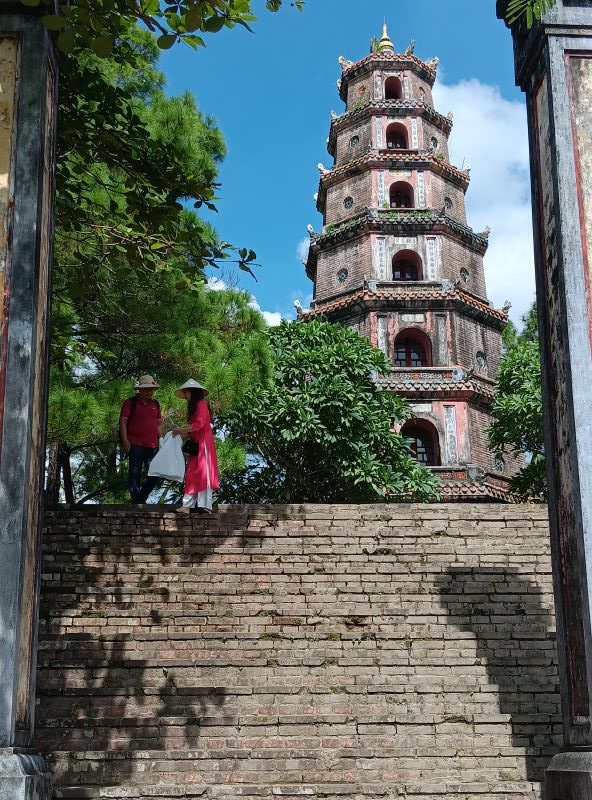
2. Thien Mu Pagoda
Thien Hien Mu Pagoda, also known as Thien Mu Pagoda, is one of Hue’s most iconic landmarks, perched on a hill overlooking the Perfume River. Built in 1601 during the reign of Lord Nguyen Hoang, it is the oldest pagoda in the city and carries deep spiritual and historical significance. Its most recognizable feature is the seven-tiered Phuoc Duyen Tower, a graceful structure that has become a symbol of Hue itself. Within the grounds, visitors can see ancient statues, bonsai gardens, and a car linked to a famous Buddhist monk’s protest in the 1960s, adding a poignant historical layer. The serene setting and the view over the river make it both a place of worship and a peaceful retreat for visitors.
- Iconic seven-story pagoda overlooking the Perfume River.
- Oldest pagoda in Hue, built in 1601.
- Important Buddhist site with peaceful gardens.
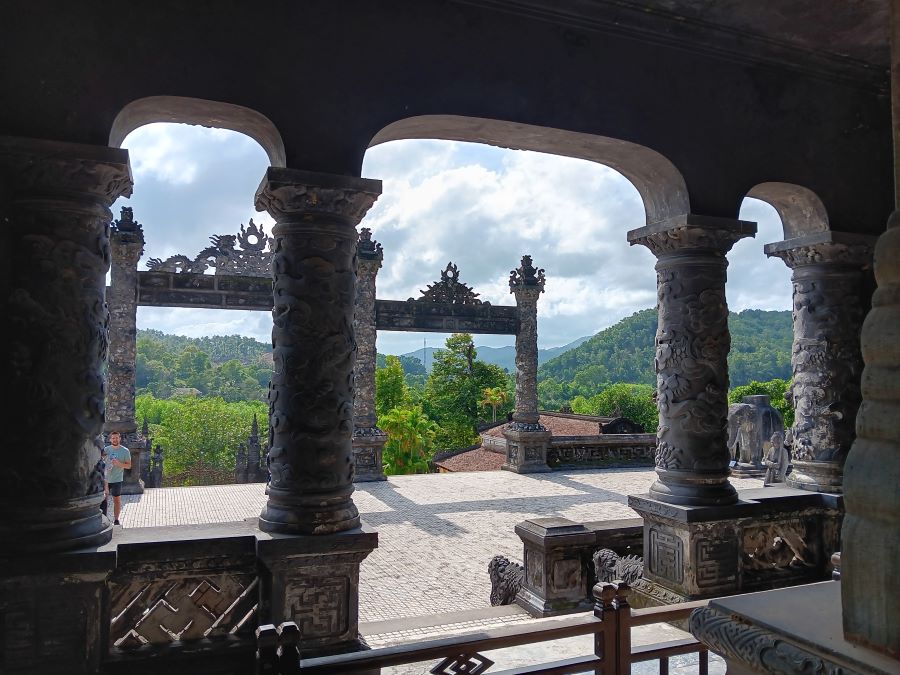
3. Royal Tombs of the Nguyen Emperors
The Royal Tombs of the Nguyen Emperors, scattered along the Perfume River in Hue, are some of the most remarkable landmarks of Vietnam’s imperial past. Built between the early 19th and mid-20th centuries, each tomb reflects the personality, philosophy, and ambitions of the emperor it honors. They are not just burial sites but sprawling complexes with ornate gates, pavilions, landscaped gardens, lakes, and temples. Among the most visited are the tombs of Minh Mang, known for its harmonious design with nature; Tu Duc, admired for its poetic setting with pine forests and lotus ponds; and Khai Dinh, striking for its blend of traditional Vietnamese architecture with European influences and elaborate interior decoration. Together, these tombs offer a glimpse into the grandeur of the Nguyen dynasty and serve as serene spaces where history, art, and nature come together.
- Tomb of Minh Mang: Symmetrical layout with lakes and gardens.
- Tomb of Khai Dinh: Unique mix of Vietnamese and European architecture.
- Tomb of Tu Duc: Elegant design with pavilions and lotus ponds.

. Perfume River (Sông Hương)
- Scenic river flowing through Hue.
- Popular for boat rides, especially at sunset.
- Offers views of pagodas, tombs, and countryside.
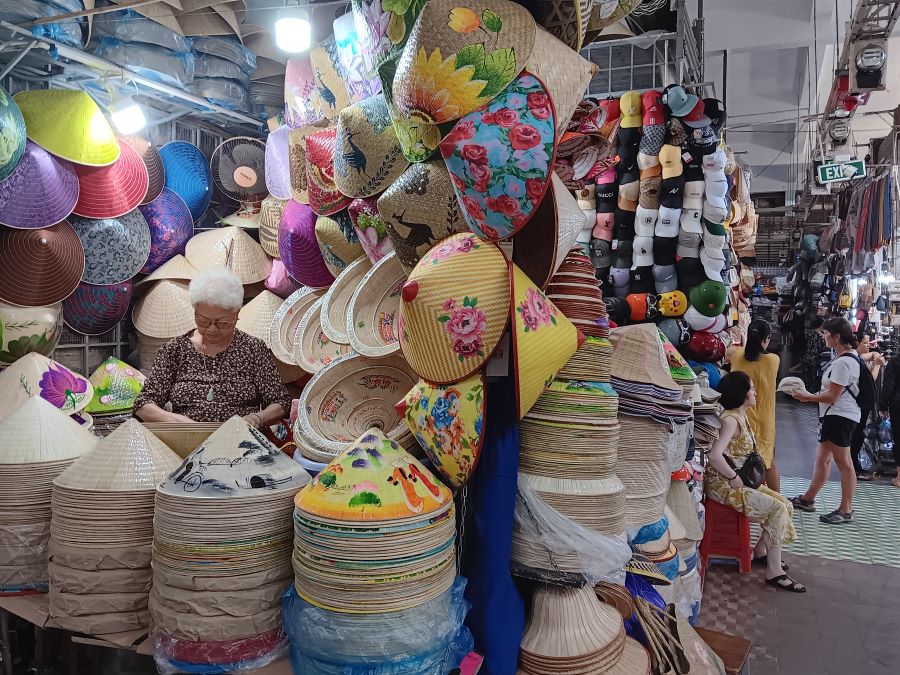
5. Dong Ba Market
- Traditional market near the river.
- Local food stalls, spices, handicrafts, and daily life experiences.
- Great for sampling Hue’s famous cuisine.
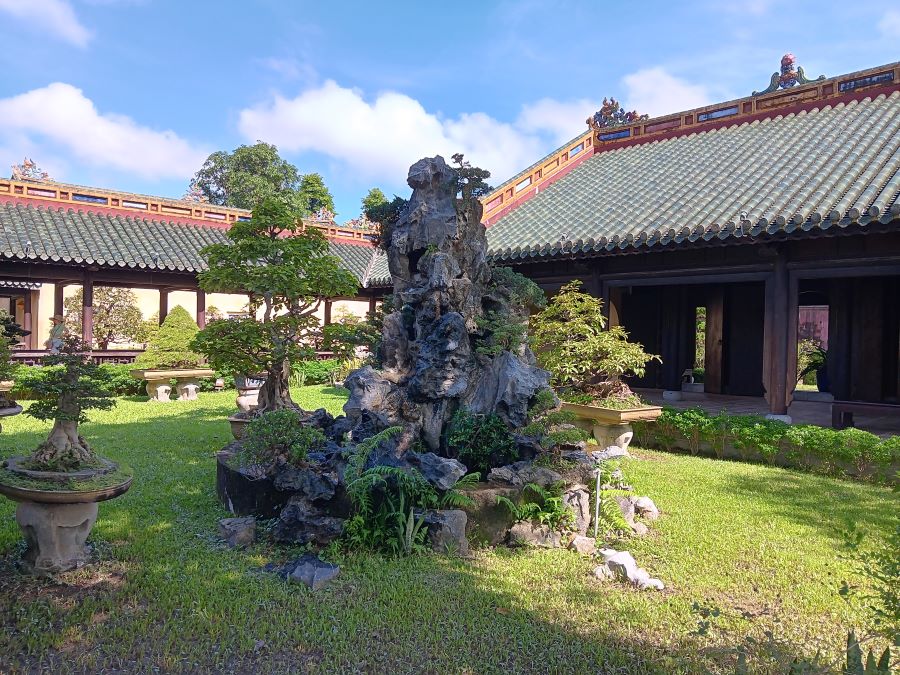
6. Hue Museum of Royal Antiquities
- Collection of artifacts from the Nguyen Dynasty.
- Displays include royal costumes, ceramics, and furniture.
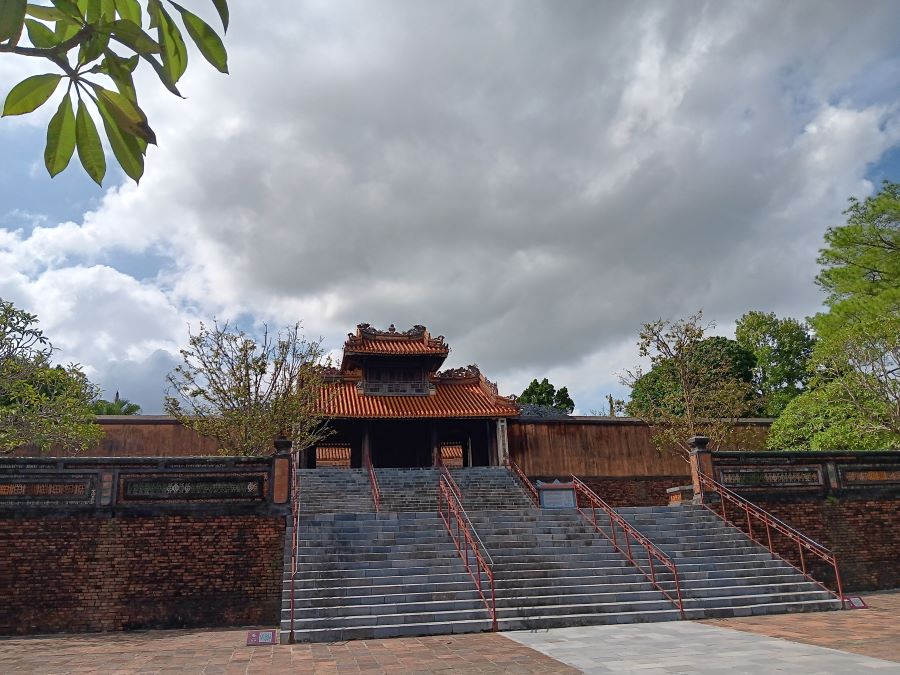
7. Hon Chen Temple
Hon Chen Temple, located on the banks of the Perfume River in Hue, is a colorful and lively religious site dedicated to the worship of the Mother Goddess Thien Y A Na, an important deity in Vietnamese folk belief. Unlike many of Hue’s imperial monuments, the temple blends Confucian, Buddhist, and animist traditions, creating a unique spiritual atmosphere. The temple complex is best known for its vibrant festivals, especially in the third and seventh lunar months, when locals gather for elaborate ceremonies with music, dance, and offerings carried on dragon boats along the river. Surrounded by lush hills and overlooking the water, Hon Chen Temple offers visitors a glimpse into Vietnam’s rich spiritual heritage beyond the imperial court.
- Colorful temple dedicated to local deities and mother goddess worship.
- Located on the banks of the Perfume River.
8. Thanh Toan Bridge
Truong Tien Bridge, also known as Trang Tien Bridge, is one of Hue’s most recognizable landmarks, stretching gracefully across the Perfume River and connecting the city’s north and south banks. Designed by Gustave Eiffel’s company in the late 19th century, the iron bridge has six arches and a distinctive French colonial style that reflects Hue’s blend of local and European influences. Over the years, it has witnessed wars, floods, and periods of reconstruction, yet it remains a symbol of the city’s resilience. Today, the bridge is especially admired at night when it lights up in shifting colors, creating a scenic reflection on the river and a popular spot for evening strolls.
- Historic covered bridge built in the 18th century.
- Picturesque countryside setting with a small local market.
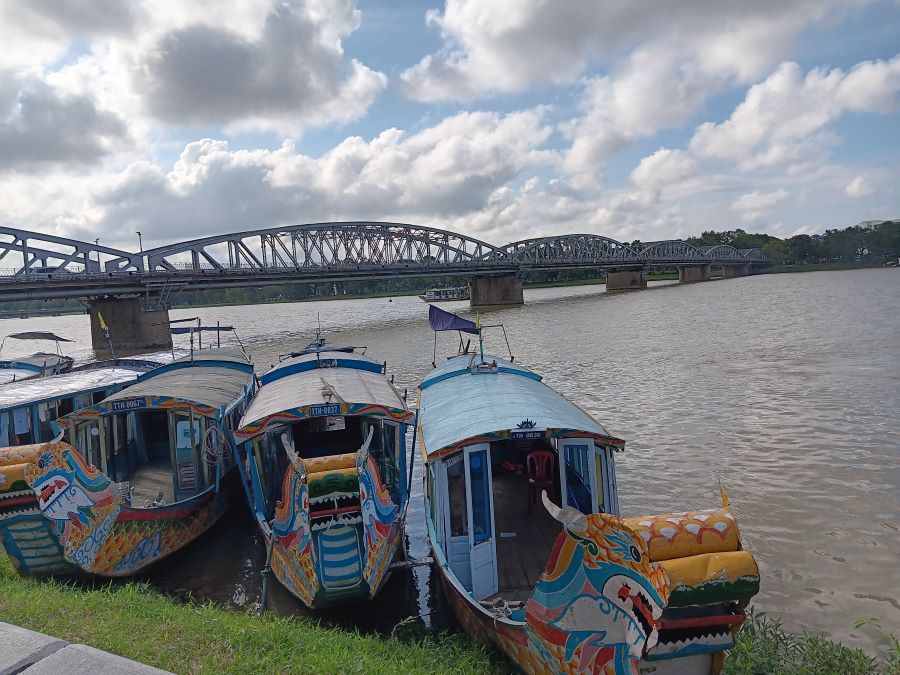
9. Truong Tien Bridge
- Iconic iron bridge across the Perfume River.
- Designed by Gustave Eiffel’s company in the late 19th century.
- Best viewed at night when illuminated.
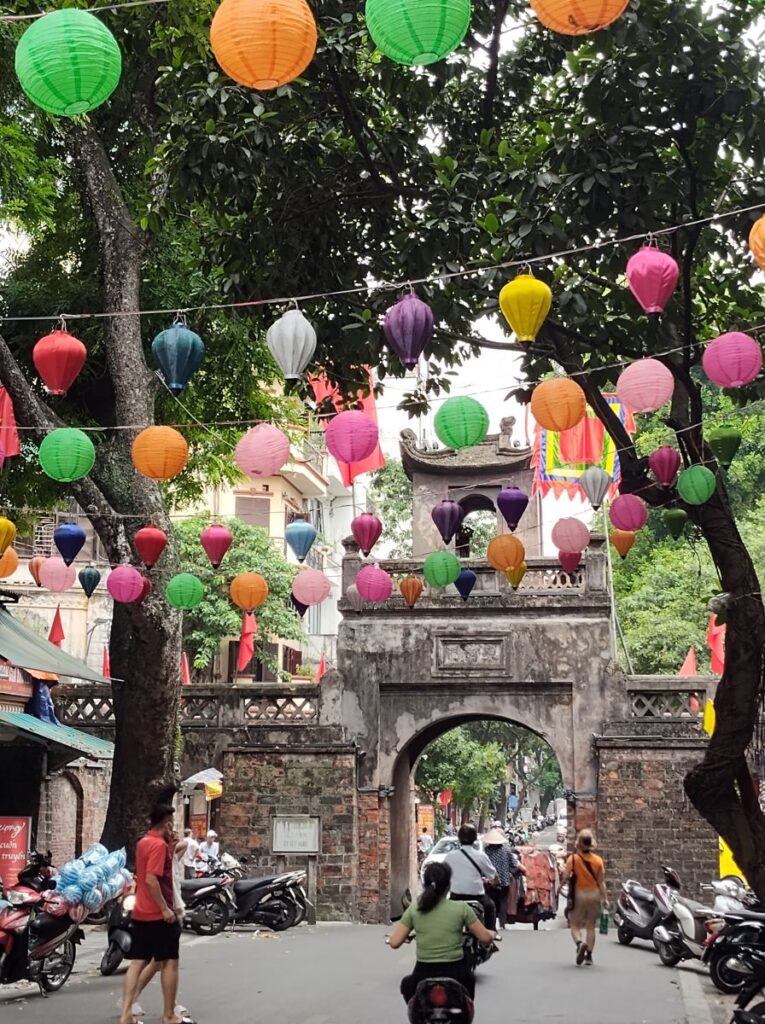
10. Local Villages and Countryside
- Bicycle or motorbike trips to nearby craft villages.
- Explore rice fields, fishing lagoons, and traditional life outside the city.
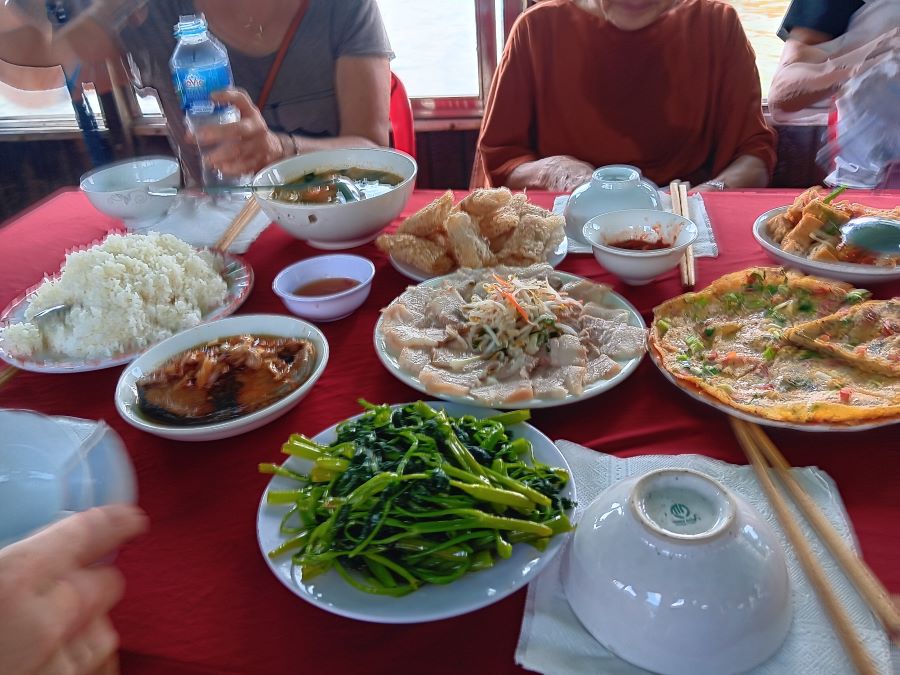
11. Local Foods of Hue
If you are looking for unique and llocal foods of Hue that travelers should try, check out these favorite dishes below
1. Bun Bo Hue (Spicy Beef Noodle Soup)
- Signature dish of Hue, known for its spicy broth flavored with lemongrass.
- Thick rice noodles served with beef shank, pork knuckles, and sometimes congealed pig’s blood.
- Topped with fresh herbs, lime, and chili for balance.
2. Banh Beo (Steamed Rice Cakes)
- Small, delicate rice flour cakes served in tiny dishes.
- Topped with dried shrimp, crispy pork skin, scallion oil, and a drizzle of fish sauce.
- Popular street food snack.
3. Banh Nam (Flat Rice Dumpling)
- Soft rice flour dumplings filled with minced pork and shrimp.
- Steamed in banana leaves, giving them a fragrant aroma.
- Served with fish sauce for dipping.
4. Banh Loc (Tapioca Dumpling)
- Chewy dumplings made from tapioca flour, filled with shrimp and pork belly.
- Steamed in banana leaves or served without wrapping.
- Often enjoyed as a snack or appetizer.
5. Com Hen (Rice with Baby Clams)
- A humble but flavorful dish using tiny river clams.
- Served over rice with peanuts, herbs, fried pork rinds, and chili sauce.
- Known for its mix of textures and spicy kick.
6. Nem Lui (Lemongrass Pork Skewers)
- Grilled ground pork wrapped around lemongrass stalks.
- Served with rice paper, fresh herbs, and peanut dipping sauce.
- A favorite for those who enjoy smoky grilled flavors.
7. Banh Khoai (Hue Pancake)
- Crispy rice flour pancake filled with shrimp, pork, and bean sprouts.
- Eaten wrapped in rice paper with fresh greens and dipped in Hue’s special peanut-hoisin sauce.
- Different from the more common southern banh xeo.
8. Che Hue (Sweet Soups/Desserts)
- A wide variety of sweet soups made with beans, corn, lotus seeds, taro, and fruits.
- Can be served hot or cold, layered in a glass.
- A colorful and popular way to finish a meal.
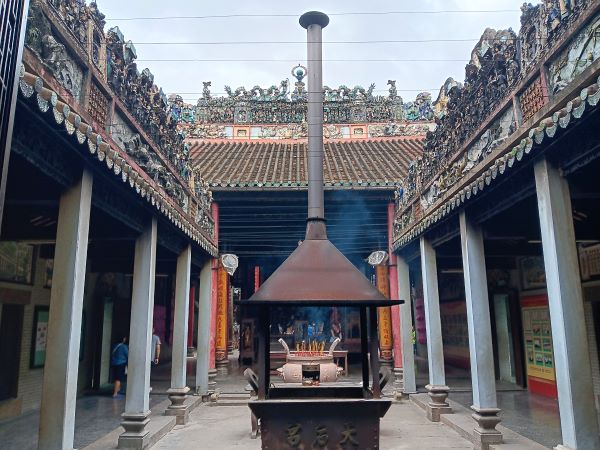
Details to visiting the Imperial sites at Hue
Here’s the practical info for visiting Hue Imperial City (Đại Nội) in Vietnam:
- Cost: Entrance tickets are about 200,000 VND (around $8 USD) for adults. Children under 12 usually pay half price, and kids under 6 are free. Combo tickets that include other royal tombs and monuments around Hue are also available for a higher price.
- Hours: The Imperial City is open daily from 7:00 AM to 5:30 PM. Last entry is typically 30 minutes before closing.
- Website: The official site for information and tickets is http://hueworldheritage.org.vn.
Check out this visit tour experience of exploring the main attractions of Hue below
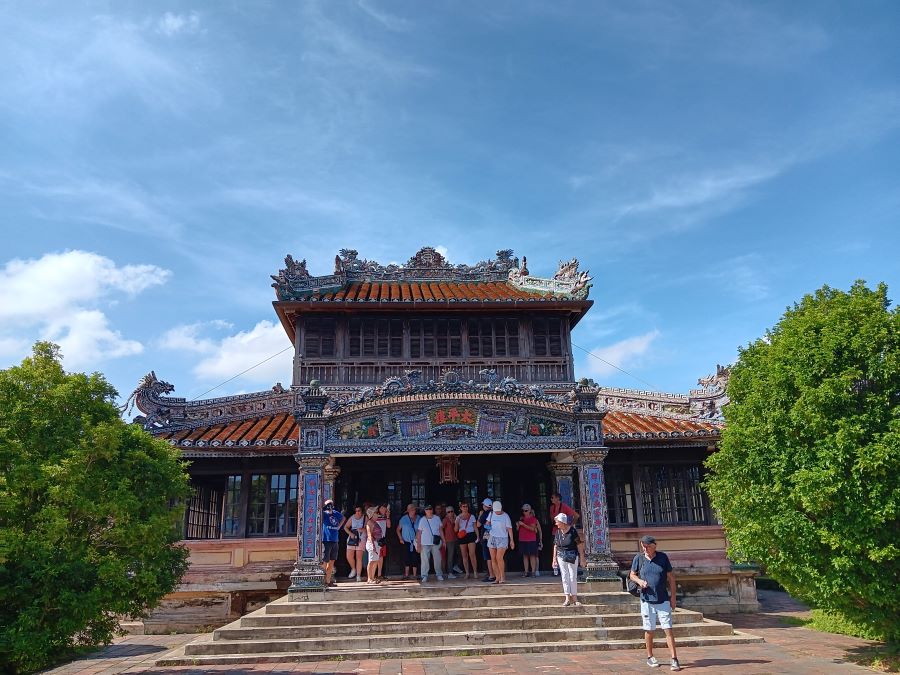
Group tours of Hue
Group tours of Hue are sometimes preferable to arrange air conditioned buses, the driver and also a tour guide to show you most of the key sites without having to try to make all the arrangements yourself or pay for a private tour. Here are some recommendations of tours to take below:
Da Nang: Hue Imperial Day Trip, Hai Van Pass Train, & Lunch
Discover stunning views of the coast as you take a scenic train through the Hai Van Pass to the Hue Imperial city on this day trip from Da Nang. Explore the city and savor a local lunch.
From Hoi An/Da Nang: Hue Imperial City Group Tour with Lunch
Visit Hue Imperial City, Khai Dinh Mausoleum, and Thien Mu Pagoda on this day trip from Hoi An and Da Nang. Explore fascinating sites, taste local cuisine, and enjoy convenient pickup and drop-off.
Hue Imperial City Walking Tour: Citadel & Forbidden City ( Meet at Hue)
Explore Hue Imperial City on a guided tour. Gain insights into the history, culture, and architecture of the Nguyen Dynasty era to understand its enduring impact on modern-day Hue city.
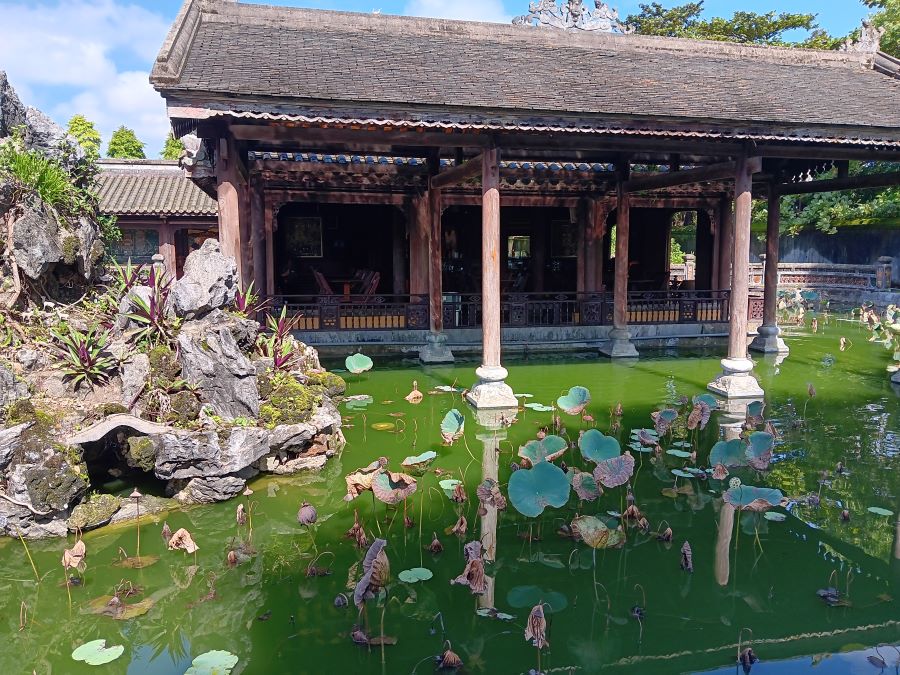
Further Reading – Visiting Vietnam
Here’s some additional topics and information to visiting different parts of Vietnam for reference below:
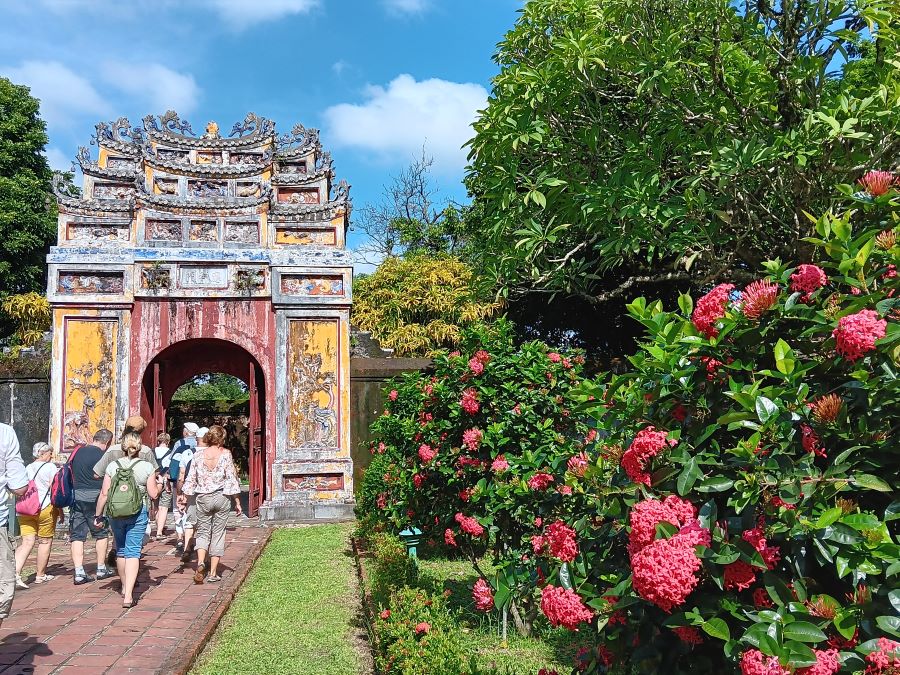
Conclusion to visiting Hue, Vietnam
Visiting Hue offers a deep journey into Vietnam’s imperial past while also letting you enjoy its serene riverside landscapes, flavorful cuisine, and timeless traditions. From the grandeur of the Imperial City to the quiet beauty of royal tombs and pagodas, every corner of Hue tells a story of history and culture. Whether you’re wandering the markets, cruising along the Perfume River, or exploring the countryside by bike, Hue provides a balance of heritage and everyday life that feels authentic and enriching. If you’re planning a trip through central Vietnam, make sure Hue is on your itinerary—come see for yourself why this former capital remains one of the country’s most meaningful destinations.

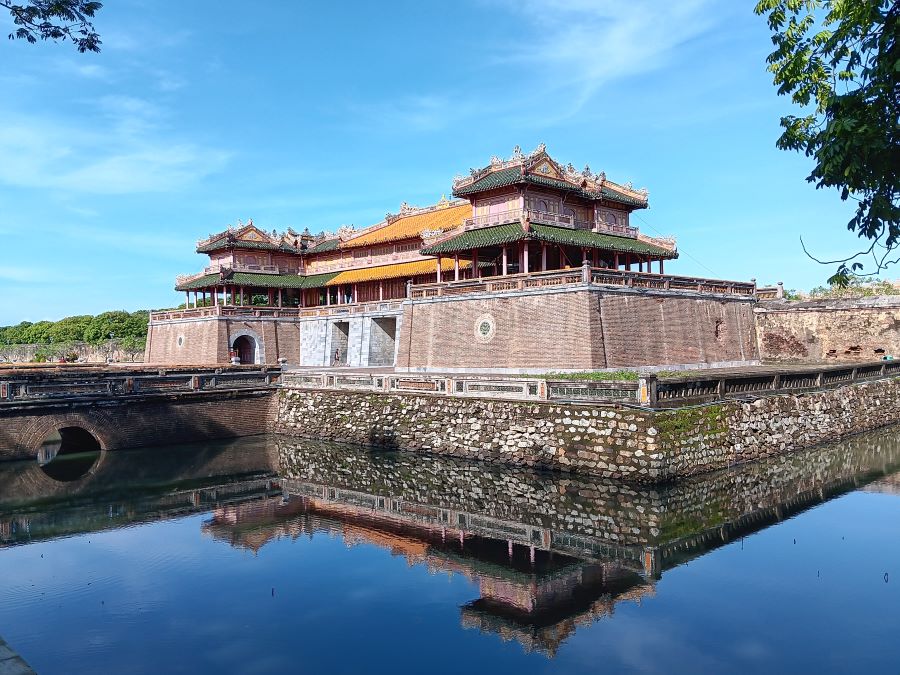

Trackbacks/Pingbacks